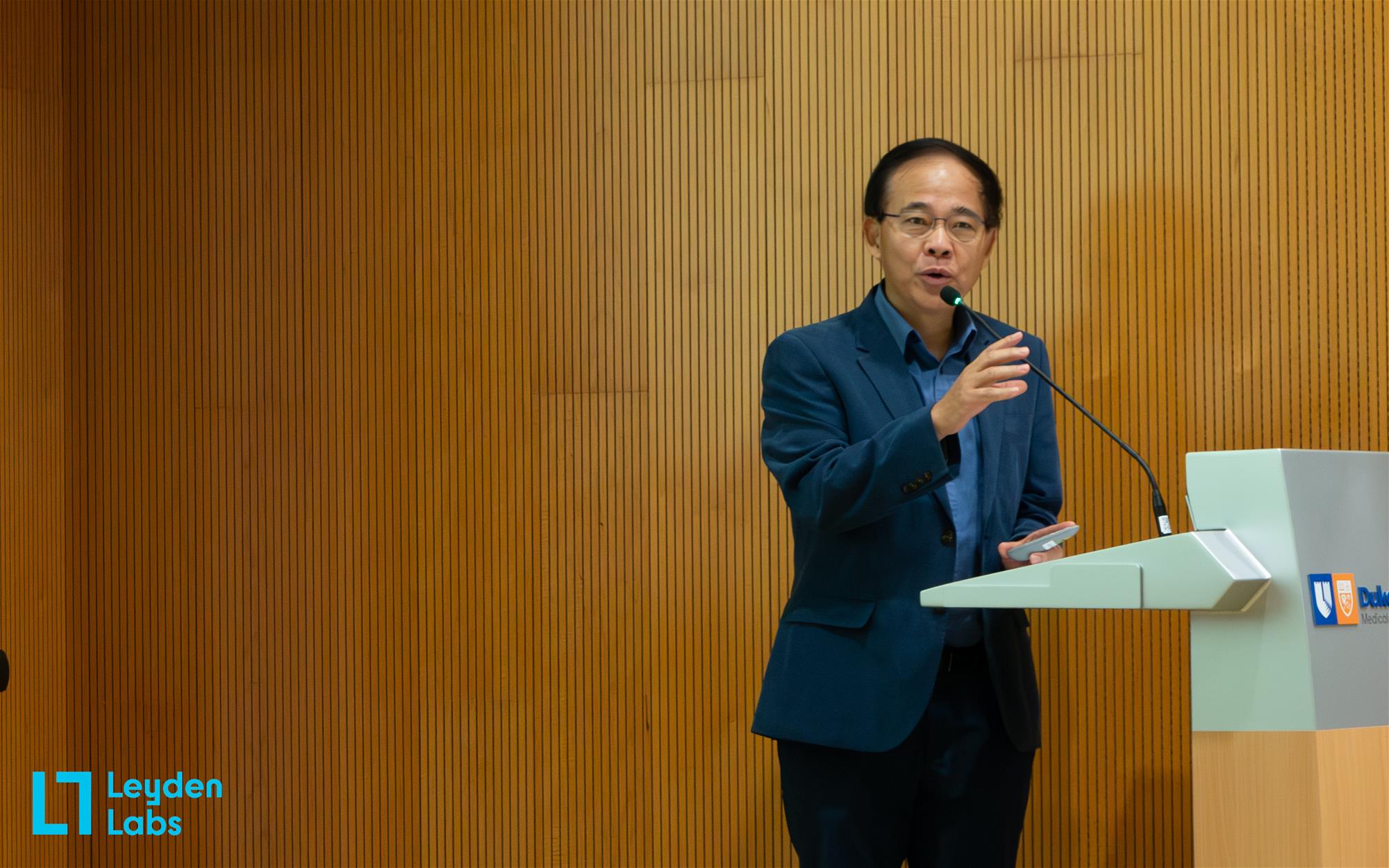Pandemics are not rare—they are often driven by our own actions.
Why then does humanity keep forgetting lessons of past outbreaks, leaving us no more prepared for the next one?
These questions set the tone for the Symposium on the Pandemic Threat of Influenza and Other Respiratory Viruses, organised by Duke-NUS Medical School and supported by Leyden Labs.

Held recently at the Duke-NUS Amphitheatre, the full-day event brought together global experts in virology, immunology, structural biology, and antiviral research to examine how the world can better prepare for Disease X—the as-yet-unknown pathogen that could trigger the next pandemic.
In his opening remarks, Dean-designate Professor Patrick Tan highlighted Singapore's role as a global bridge for scientific collaboration. He emphasised the need for continued dialogue among experts worldwide, reminding the audience that the pandemic preparedness is not a question of if, but when.
The symposium, co-chaired by Professor Gavin Smith, Director of Duke-NUS’ Emerging Infectious Diseases Programme, and Professor Paul Ananth Tambyah, from NUS Yong Loo Lin School of Medicine, featured six speakers and lively Q&A sessions throughout the day.

Among the various experts, Professor Wang Linfa—Executive Director of the Programme for Research in Epidemic Preparedness and Response (PREPARE)—likened pandemic response to fighting terrorism, a constant bATTLE against unknown treats.
From Middle East respiratory syndrome in 2012 and the large-scale Ebola virus outbreak in 2014, to Covid-19 in recent memory, the world has witnessed multiple zoonotic disease outbreaks caused by bat-borne viruses or viruses with ancestral lineages in bats.
Although bats are now known as one of, if not, the most important reservoir of different viruses, yet bats carry these viruses in a largely asymptomatic manner. As such, there no certainty in knowing what would trigger the next pandemic or Disease X.

Prof Wang also reminded the audience that pets are not just limited to cats, dogs and birds when studying the potential spread of zoonotic diseases. An example he gave during his presentation was horses in Australia.
Closing the symposium, Professor Jaap Goudsmit, adjunct professor of Epidemiology and Infectious Diseases at Harvard T.H. Chan School of Public Health and chief scientist at Leyden Labs echoed the general expert sentiment that the greatest likelihood for the next pandemic comes from the zoonotic spillover of respiratory viruses.
One thing the panel of experts generally agreed on was the perennial need for constant public health surveillance, albeit challenges will continue to persist.
The symposium ended with presentation of tokens of appreciation for the panel of participating experts followed by a cocktail and networking reception.
All photos in this story are copyrighted to Leyden Labs.